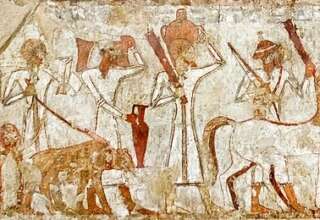
Environment and Economy
Water rights for the Navajo Nation have been a source of environmental conflict for decades, as Navajo lands have provided energy and water for residents of neighboring states while many of the Navajo do not have electricity or running water in their homes. Native American tribes along the Colorado River were left out of the 1922 Colorado River Compact that divided water among the states, forcing tribes to negotiate settlements with the states for water. The Navajo negotiated water settlements with New Mexico and Utah in 2009 and 2020 respectively but had not reached an agreement with Arizona by 2023. On June 22, 2023, the US Supreme Court ruled in Arizona v. Navajo Nation that the federal government of the United States has no obligation to ensure that the Navajo Nation has access to water.
The Navajo economy and culture have long been based on the raising of sheep and goats. Navajo families process the wool and sell it for cash or spin it into yarn and weave blankets and rugs for sale. The Navajo are also noted for their skill in creating turquoise and silver jewelry. Navajo artists have other traditional arts, such as sand painting, sculpture, and pottery. Sheep remain an important aspect of Navajo culture and economy.
Navajo college students and graduates studying at universities in cities and towns outside the reservation may elect to stay there rather than relocate to the Navajo Nation because of the relative abundance of employment opportunities, connections with other classmates, and higher quality of life. This phenomenon contributes to human capital flight or “the brain drain”, where highly skilled or highly educated individuals are attracted or pushed to a location with different or more economic opportunities. They are not incorporated into the community and local economy of origin.






